Exploring The Differences Between E26 And E27 Bulbs March 3, 2024 – Posted in: Lighting Information
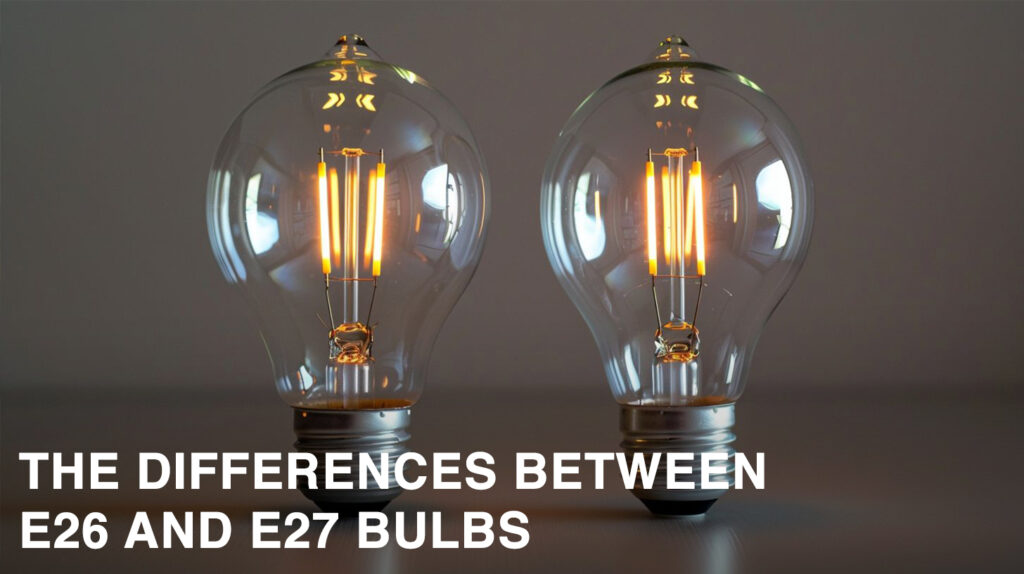
Table of Contents
Have you ever found yourself in the aisle of a hardware store, feeling overwhelmed by the selection of light bulbs? Trying to decide between an E26 or an E27 bulb can leave anyone scratching their head.
After spending some time researching this topic, I discovered that while these bulbs might look nearly identical at first glance, there are small yet significant differences that could impact your choice.
In this blog post, we’ll dive into everything from screw lengths to voltage requirements to help ensure you pick the perfect bulb for your lamp. Let’s illuminate the situation together!
Key Points
- E26 and E27 bulbs look almost the same, but they have key differences like voltage requirements and screw base sizes that affect where and how you can use them safely.
- In North America, we use E26 bulbs designed for 120V systems, while in Europe, E27 bulbs are standard for 240V systems.
- While E26 and E27 bulbs can fit into each other’s sockets because of their similar size, it’s not safe to interchange them due to varying voltage needs.
- Choosing the correct bulb type involves checking your lamp’s voltage rating and considering your geographical location to ensure safety and optimal performance.
- Understanding the mechanical distinctions between these bulb types helps prevent potential risks like electrical hazards or a shortened bulb life.
Mechanical Differences between E26 and E27 Bulbs
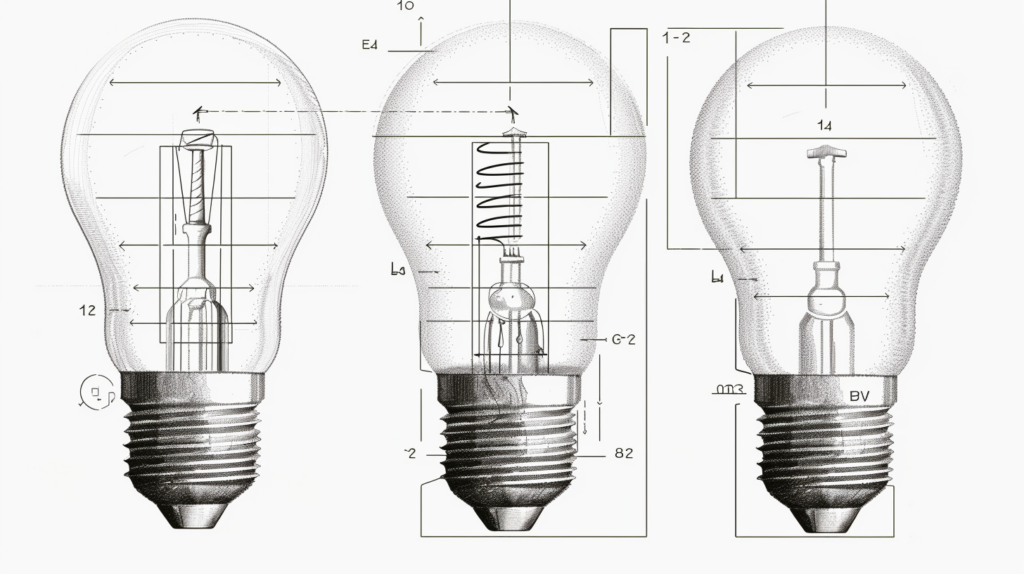
Diving into the world of light bulbs, we find that E26 and E27 types have their own unique twists…literally. The main difference lies in their screw base dimensions, making each a snug fit for its respective socket.
Specifications & Mechanical Differences
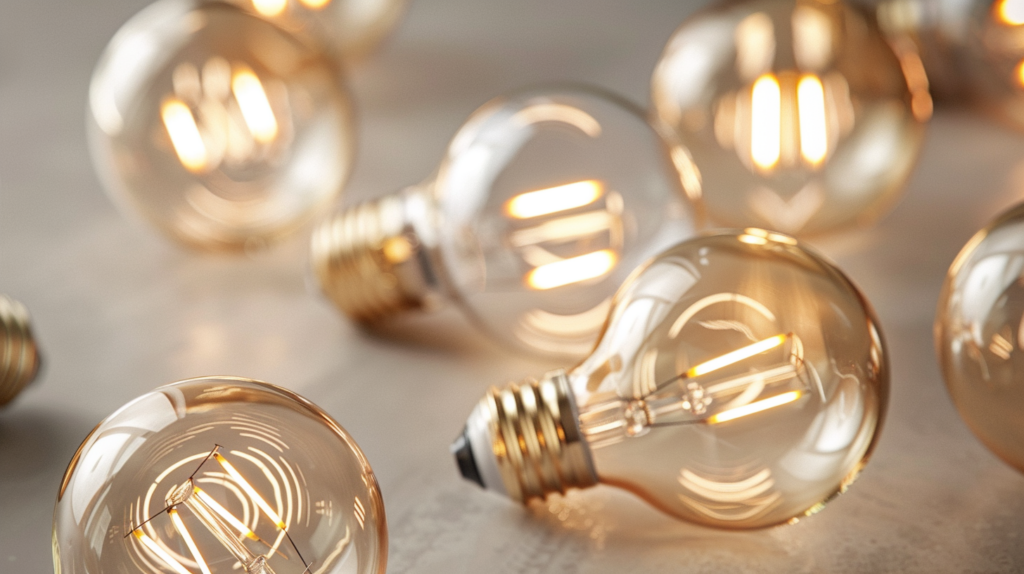
Exploring the little things in life, like the nuances between E26 and E27 bulbs, can be quite the adventure. It’s fascinating how something so small can make a big difference in lighting our homes. So, let’s dive into the specifications and mechanical differences between these two types of bulbs. I’ve laid out the details in a neat table below to help us grasp the distinctions clearly.
| Specification | E26 Bulbs | E27 Bulbs |
|---|---|---|
| Voltage | Designed for 120VAC | Designed for 240VAC |
| Thread Size | 26mm | 27mm |
| Interchangeability | Not electrically interchangeable | Not electrically interchangeable |
| Screw Length | 19.56mm Minimum | 22.0mm Minimum |
| Electrical Safety | Must adhere to North American standards | Must adhere to European standards |
Measurements Table
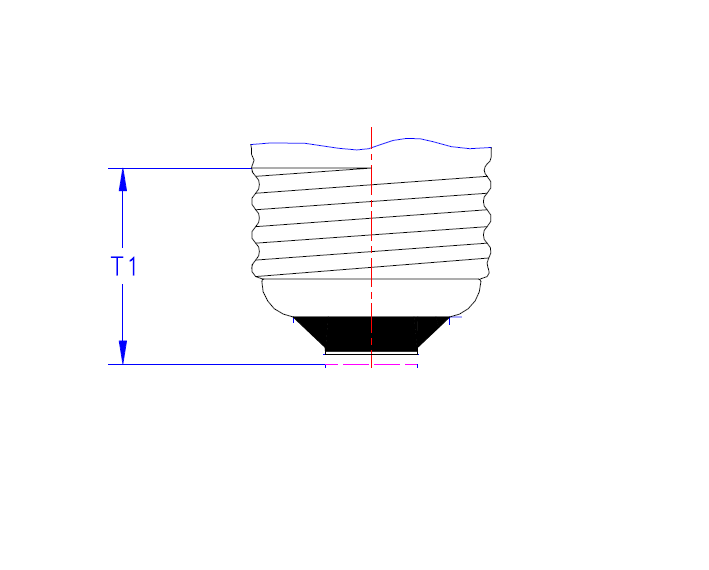 Length of Screw (Minimum) | 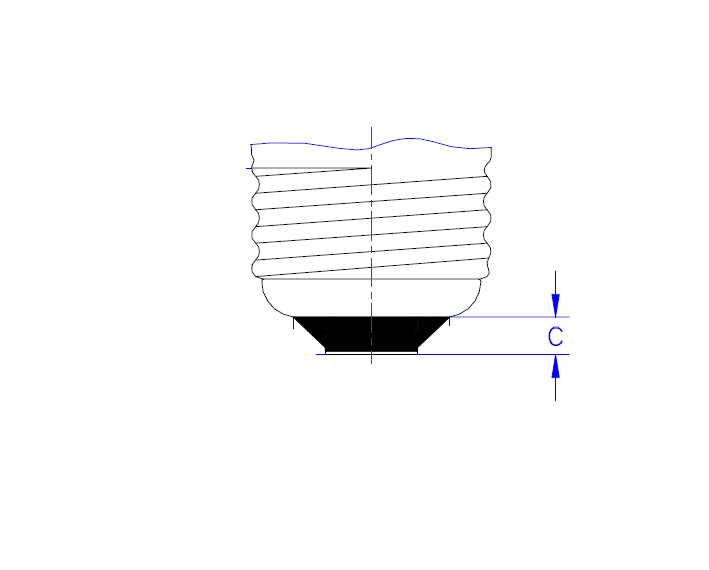 Insulator Cap Height |  Screw Diameter at Thread Peak | 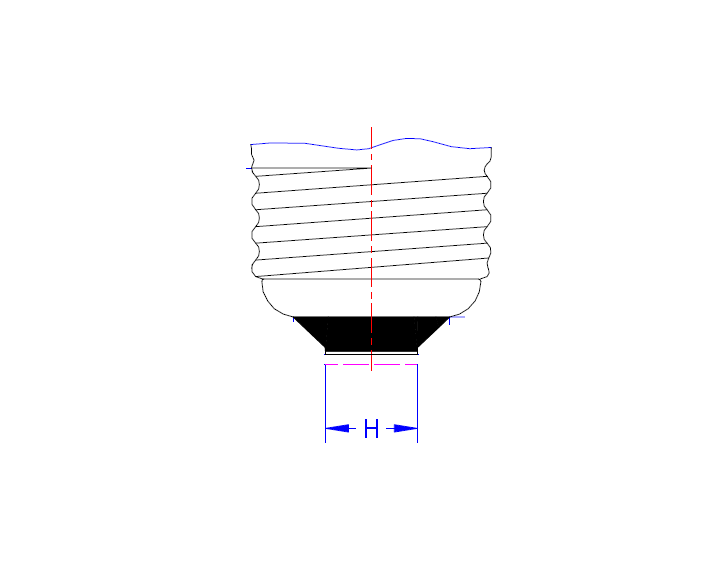 Live Contact Pad Width | |
| E26 Light Bulb | 19.56mm | 3.25mm | 26.05mm – 26.41mm | 9.14mm – 11.56mm |
| E27 Light Bulb | 22.0mm | 5mm | 26.05mm – 26.45mm | 4.8mm-11.5mm |
Now, you might look at this and think, “They’re almost the same size, so what’s the big deal?” Well, despite their deceptively similar size, these bulbs are designed for different voltage levels. This key difference isn’t just about fitting into a socket—it’s about ensuring safety and efficiency.
When it comes to your lighting choices, it’s crucial to match the bulb to your location’s standard voltage. Opting for the wrong type could lead to unnecessary risks or even shorten the life of your bulb. Always remember, when in doubt, check the specifications. This small step can save you from a lot of hassle later on.
So there you have it, a brief excursion into the world of E26 and E27 bulbs. It’s all in the details, my friends. Keeping an eye on these can make all the difference in lighting your space just right.
Screw Length

The screw length plays a big part in how E26 and E27 bulbs fit into their sockets. I found out that the minimum screw length for an E26 bulb is 19.56mm, which is slightly shorter than the 22.0mm required for an E27 bulb.
This difference means that fitting an E26 bulb into an e27 socket might give you a bit more wiggle room because of that extra length on the E27 screw.
This longer screw not only provides better alignment but also ensures a secure fit for my lighting fixtures. Using bulbs with the correct screw length keeps everything safe and properly functioning, so always checking this detail helps prevent loose connections or other issues down the line.
Voltage and Compatibility Differences

E26 bulbs light up our lives in North America, needing 120 volts to do their thing. On the other side of the pond, E27 bulbs shine bright in Europe with a need for 220 volts. So, let’s dive deeper and check out if we can swap these bulbs or better keep them on their own turf.
North American vs. European Standards
In North America, we mostly stick to 120V AC, making the E26 bulb base a go-to for our lamps and lighting fixtures. This standard fits well with our electrical systems in places like the US, Canada, Japan, and Taiwan.
We rely on these bulbs for everything from cozy living room setups to bright kitchen lights.
Across the pond in Europe and down under in Australia, it’s a different story. They use E27 bulbs designed for their 220-240V AC systems. This difference might seem small but plays a big role in ensuring light fixtures work properly and safely within each region’s power setup.
It’s fascinating how one tiny change—a millimeter difference in screw base—reflects broader electrical standards across continents!
Interchangeability

E26 and E27 bulbs may look almost the same at first glance, yet there’s a tiny catch— a base difference of only 1mm. This small difference means while they can physically screw into each other’s sockets, it doesn’t guarantee electrical safety.
I’ve learned that using an E26 bulb in an E27 socket (and vice versa) is technically possible due to their mechanical compatibility. However, always checking voltage compatibility before making the swap is essential.
After all, ensuring our homes are lit safely matters more than just getting the light to turn on.
I make it a point to remind friends and readers alike about this subtle but critical detail. Sure, it might seem easy just to use what you have on hand, especially when those bulbs easily fit into the opposite sockets.
But playing it safe and respecting both voltage requirements and fixture specifications can save us from unnecessary risks. Let’s keep our lighting choices smart and safe by paying attention not just to whether they fit but also if they’re right for our home’s electrical setup.
Electrical Safety Differences Between E26 and E27
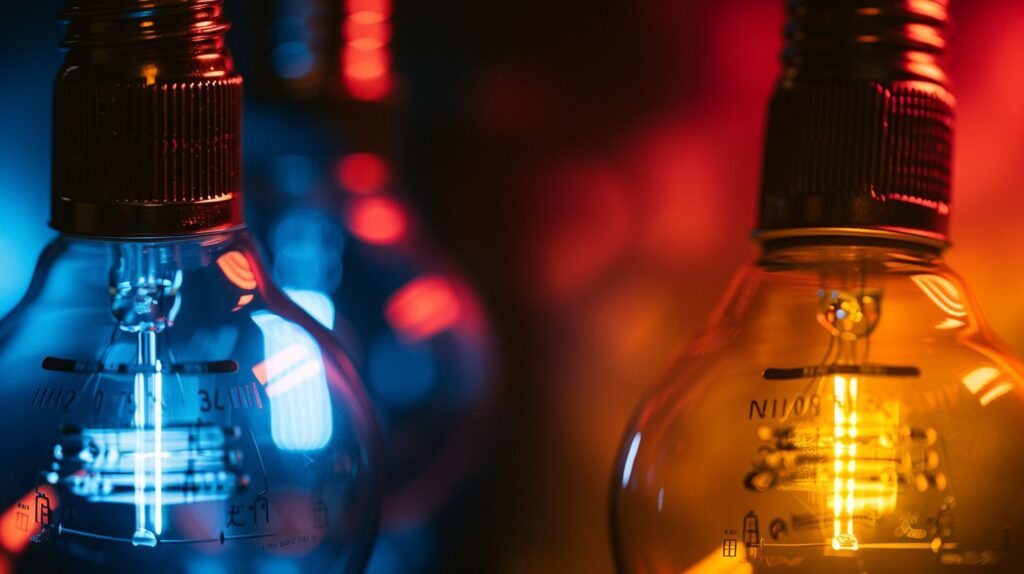
Safety first, right? When it comes to E26 and E27 bulbs, they meet different safety standards because of the voltage they handle.
Safety Standards
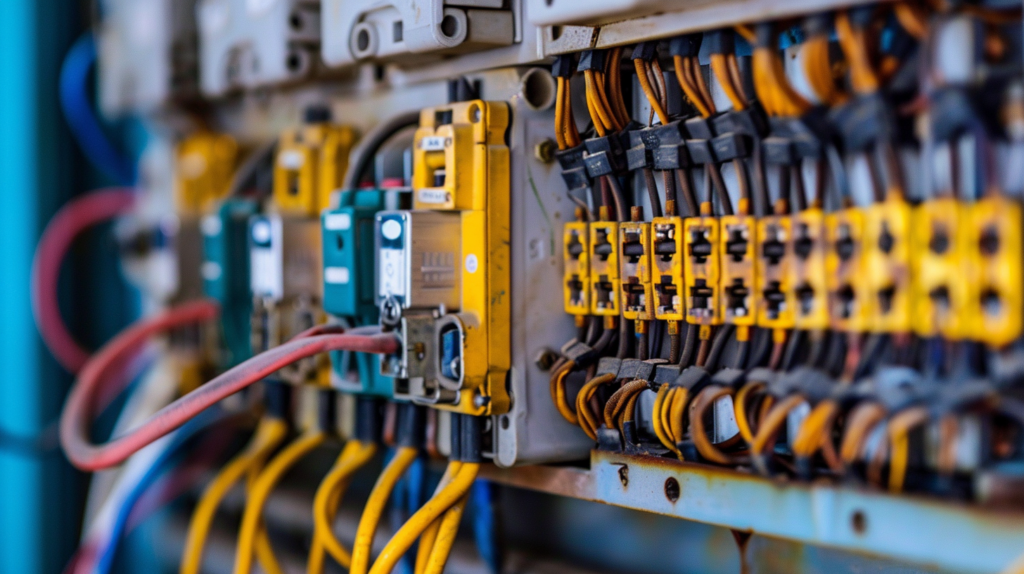
E26 and E27 bulbs don’t always follow the same electrical safety standards, something I uncovered while digging deep into how these light fixtures work. It’s important to know this because not all sockets and bulbs are created equal, especially when it comes to keeping our homes safe.
We often assume that if a bulb screws in easily, it’s good to go. However, that’s not always the case from an electrical safety perspective.
I’ve learned it’s crucial to match bulbs with their correct sockets — e26 with e26 lamp holders and e27 with e27 bases — for more than just fit; it ensures they operate within safe electrical parameters.
This isn’t just about preventing a bulb from flickering or burning out prematurely; it’s about reducing the risk of fire or electrical hazards in our homes. So next time you’re swapping out a bulb, take an extra moment to ensure compatibility not just for function but for your safety too.
Risks of Interchanging Bulbs
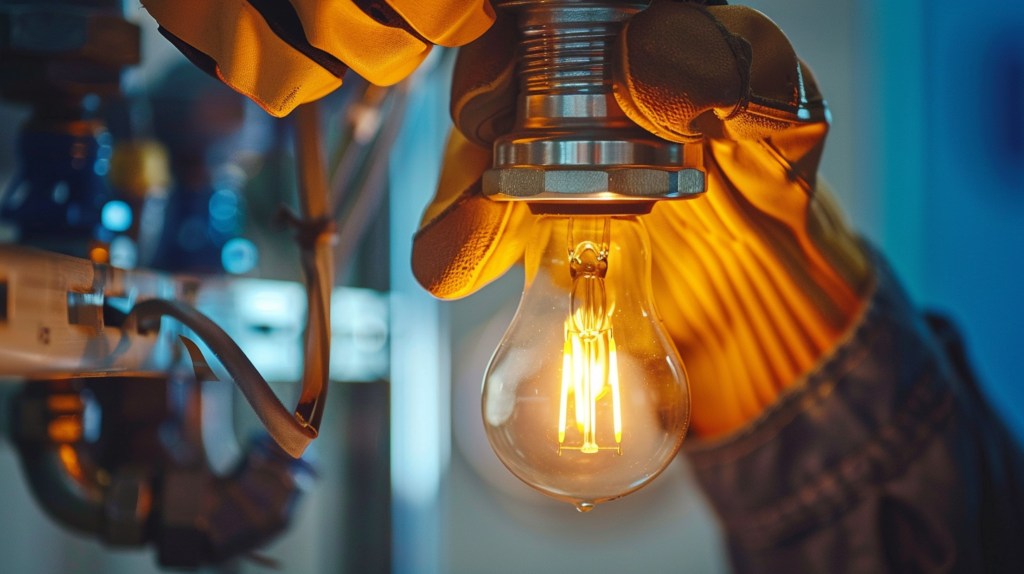
Mixing up E26 and E27 bulbs seems simple enough, right? After all, they practically look the same. But here’s the catch – there’s a tiny but crucial difference in their base size. This 1mm gap doesn’t sound like much, yet it can create significant safety issues.
Using an E27 lamp in an E26 socket might feel like it fits just fine. However, this mismatch can lead to electrical hazards such as short circuits or even fires. Safety standards are not just guidelines; they are protocols designed to keep us safe.
I learned something pretty important during my deep dive into lighting: swapping these two bulbs isn’t worth the risk. The reasons are grounded in electrical safety norms that ensure our devices work without causing harm.
Despite their mechanical interchangeability, combining an e26 bulb with an e27 socket (or vice versa) sidesteps these critical standards—potentially leading to damage or danger I’d rather avoid any day. On top of that, insurance may refuse to cover fire damages due to not meeting electrical codes.
Regional Compatibility

In North America, we mainly use E26 bulbs for our lamps and fixtures. Over in Europe, though, it’s all about the E27 bulbs—they fit in just fine with their lighting systems.
Use of E26 in North America
E26 bulbs light up our homes here in North America. They’re the standard because we use 120V AC power, which matches their design perfectly. These LED lights fit into a variety of lamps and fixtures, making them super versatile for all our lighting needs.
I often choose E26 bulbs for my home because they are readily available and easy to install. Whether I’m setting up a cozy reading nook or brightening up the kitchen, these bulbs provide just the right amount of light.
Their widespread use across North America means I can find them in any store, which is incredibly handy during those unexpected bulb burnouts.
Use of E27 in Europe

In Europe, E27 bulbs are the standard. This isn’t just about tradition; it’s tied to regional compatibility norms and specific standards. I’ve learned that these bulbs fit into a wide array of lighting fixtures, from table lamps to ceiling lights.
Their widespread use across European countries is due to their design which seamlessly integrates with 240V AC power supplies, a common voltage in this region.
I often hear from friends in Europe how they prefer E27 bulbs for their durability and energy efficiency, especially the LED types. These preferences aren’t arbitrary—they’re shaped by the fact that E27 bulbs are designed to meet rigorous safety and performance standards specific to European regulations.
It’s fascinating how such details influence our choices without us even realizing it sometimes!
How to Choose Between E26 and E27 Bulbs

Deciding between an E26 and E27 bulb? Look at where you live and what lamp you’re using.
Bulb Type & Sizes
Picking the right bulb isn’t just about choosing between E26 and E27. It’s also key to think about size and shape. We’ve got a whole range of options, from tiny LEDs to big vintage bulbs.
This variety means you can find the perfect one for any lamp or fixture in your home.
I always check the voltage ratings, too. Some bulbs are designed for 120V systems like we have here in North America, while others fit better with Europe’s 240V setup. Understanding this helps me ensure I’m using my lights safely and efficiently, avoiding potential hazards linked with mismatched voltages.
Voltage Ratings

E26 bulbs are designed for 120 volts, typical in North America. On the other hand, E27 bulbs work with 240 volts, commonly used in Europe. It’s crucial to match the bulb with the right voltage to ensure safety and optimal performance.
Using a lower voltage bulb in a higher voltage socket might lead to quick burnout or even pose a risk.
Choosing between an E26 and an E27 depends on where you live or where you’ll use the lighting. If you’re in Europe, go for E27 LED light bulbs since they align with local power standards.
In North America? Stick with E26 bases for hassle-free compatibility. Always check your lamp’s rating before fitting in a new bulb – it saves time and prevents unnecessary headaches down the line.
Geographical Location
Living in North America means I mostly come across E26 bulbs and sockets. This standard fits well with our 120V power supply. It’s a bit different in Europe, though. Over there, E27 is the norm, suited for their 240V systems.
Knowing this makes choosing the right bulb much easier.
If you’re unsure about whether to use an E26 or E27 bulb in your lamp, think about where you live first. The specific standards and requirements of your location play a big role. For me, sticking to what’s common here works best – it ensures the lights will turn on as expected without any hassle.
FAQs
1. What’s the main difference between E26 and E27 bulbs?
The main difference lies in their screw diameter; E26 bulbs have a slightly smaller screw that fits perfectly in 120V AC sockets, mostly used in North America, whereas E27 bulbs are designed for 240V AC sockets common in Europe.
2. Can I use an E27 bulb in an E26 socket safely?
Using E26 bulbs in E27 lamp holders, especially with 240V AC, could present an electrical safety risk. This concern arises because E26 bulbs are designed to handle voltages up to 120V AC, not the higher 240V AC.
3. Is there any risk if I assume that E26 and E27 are the same and interchange them without checking?
While they often can be interchanged due to similar base design, differences in voltage – with E26 lamps at 120V AC and e27 lamps at 240V AC – could pose a risk if not properly considered.
4. How do I know whether to use an e26 or e27 bulb for my lamp?
First check your lamp’s base specification—it will tell you whether it requires e26 vs e27 bulbs. Then match this with the correct bulb type considering both screw diameter and voltage needs for safe operation.
5. Why might someone choose one type over the other—E26 versus e27 bulbs?
Choice depends on geographic location due to electrical infrastructure—e.g., using e26 bulbs for e26 sockets commonly found at 120v ac in North America, versus opting for the broader thread of an e27 bulb when dealing with European-standardized electric setups at 240v ac.
6. Are there aesthetic considerations when choosing between these two types of lightbulbs—beyond just technical specifications?
Absolutely! Beyond fitting correctly and meeting safety requirements—the style of lighting (led vs incandescent), brightness levels needed or desired ambiance all play roles too. Whether it’s creating cozy warmth or bright task lighting may lead one towards specific choices within either standard.
I have been the project manager for Modern.Place since early 2016, spending three of those years working overseas on the manufacturing & procurement side of the LED lighting industry. Constantly learning and passing on knowledge to others while excited for what the lighting industry will involve into next.

